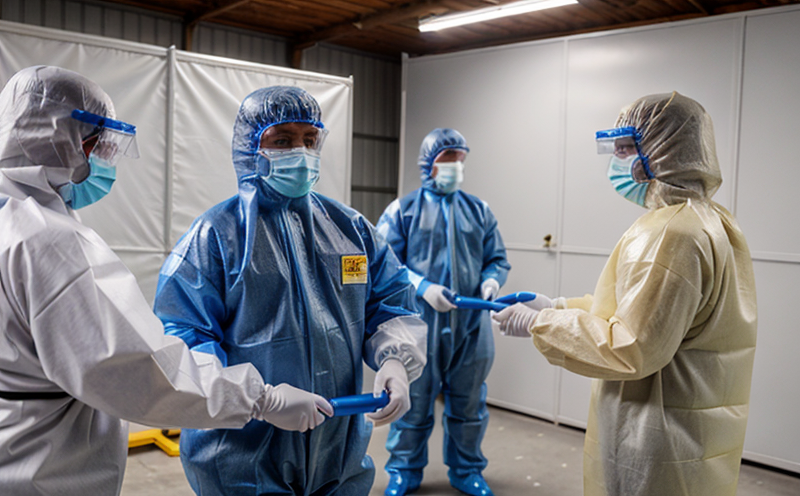EN 61482 Arc flash protection garments Test methods and classification
The EN 61482-1 standard provides a framework for testing the performance of arc flash protective clothing in terms of its ability to protect workers from the effects of electrical arcs. This standard is particularly important for industries where there is a risk of electrical faults, such as power generation and distribution, maintenance, and repair services.
The EN 61482-1 test method involves subjecting protective clothing to an arc flash event using a specially designed calorimeter. The calorimeter simulates the conditions of an actual arc fault, allowing for accurate measurement of the heat flux generated by the arc. This data is then used to determine whether the garment meets the specified performance criteria outlined in EN 61482-1.
The test method requires a pre-standardized dummy or anthropomorphic figure (AFD) that represents an average worker. The AFD is placed in the calorimeter and exposed to the arc flash event. After the exposure, the calorimeter measures the heat flux at various points on the AFD. The performance of the garment is then evaluated based on this data.
The standard specifies two levels of protection: Level 1 and Level 2. Level 1 garments provide a higher degree of thermal protection than Level 2 garments. This difference in protection level is determined by the heat flux values that the garment must withstand without causing burns to the wearer.
It's important to note that EN 61482-1 does not specify how much protection is required for a given task or environment; rather, it provides a standardized method for assessing the protective performance of garments. The decision on which level of protection is necessary should be based on risk assessment and other relevant factors.
Understanding the test methods and criteria involved in EN 61482-1 helps industries ensure that their workers are protected against the risks associated with electrical arcs. By adhering to these standards, companies can demonstrate compliance and provide a safe working environment for their employees.
Applied Standards
The primary standard applied in this service is EN 61482-1:2019, which specifies the test methods and criteria for arc rating of protective clothing intended to protect workers from the thermal effects of electric arcs. This standard has been widely adopted by industries that require a high level of safety for their employees.
Scope and Methodology
The scope of this service includes testing and classification of protective clothing according to EN 61482-1:2019. The methodology involves exposing the garment to an electrical arc using a calorimeter, measuring the heat flux on a standardized dummy, and comparing the results against the specified performance criteria.
- Preparation of specimens
- Setting up the calorimeter with the AFD
- Application of electrical arc according to standard parameters
- Measurement of heat flux at various points on the AFD
- Evaluation and classification based on performance criteria
Benefits
- Enhanced Safety: Ensures that workers are protected against the risks of electrical arcs.
- Compliance: Helps companies meet regulatory requirements and industry standards.
- Risk Mitigation: Reduces the likelihood of burn injuries from arc flashes.





